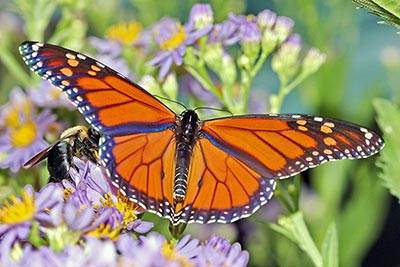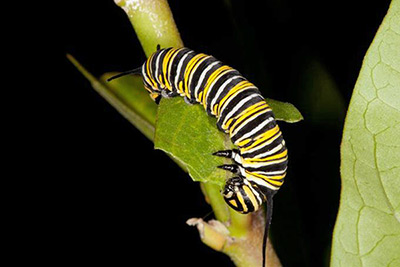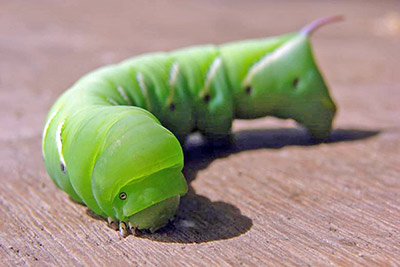CATERPILLARS, BUTTERFLIES, AND WISDOM
Las Orugas, Mariposas, y Sabiduría
by
Mary Hunt Webb
Posted Wednesday, May 31, 2017

This beautiful monarch butterfly had a humble beginning as a caterpillar. [Photographer: Kevin McIver. Photo courtesy of Pixabay.com.]
When I was in high school, I took a biology class in which we were required to create a mounted butterfly collection. Since I didn't have the money to purchase a butterfly net, I made one by bending a metal coat hanger into a round shape and sewing a cheesecloth bag onto the frame.
Thankfully, we lived next to an open field in Oklahoma so that I probably had better access to butterflies than most of my classmates. I seem to recall that most of the ones that I caught were Monarch butterflies. I can't remember if there were others.
Now that I live in the High Desert where we receive fewer than ten inches of average rainfall and melted snow in a year, it is more difficult to attract butterflies than in areas that have greater precipitation and higher humidity.
Since I miss seeing these delicate-winged creatures, I have begun to grow plants that act as hosts on which butterflies lay eggs and also as food sources for emerging caterpillars. This involves allowing caterpillars to live even when they are munching on food that my family could eat.

In order to have butterflies in my garden, I must allow caterpillars – like this monarch caterpillar – to munch on food that my family could eat. [Photographer: Jared Davidson. Photo courtesy of Stockvault.net.]
While monarchs seek nectar from a variety of plants, the mother monarch will only lay her eggs on milkweed. Although I planted milkweed and other plants last year to attract monarch butterflies, I never saw any monarchs until recently when I saw monarchs in the yard of a neighbor while I was out on a morning walk. That gave me hope. Later, my husband and I passed a house where a number of monarchs were circling over yarrow flowers along with other butterflies. Then, the next day, I looked out my window and saw two monarchs hovering over my lavender bushes. I was so pleased to finally have monarchs on our property! It was amazing to see them since the milkweed and other flowers that I planted this year haven't come up yet!
Their presence means that some of my neighbors have understood that caterpillars must be allowed to live in order for these beautiful creatures to exist. Sadly, not everyone understands this. When some gardeners see caterpillars munching on their food or their flowers, all they see is a destructive insect. They don't make the connection between the hungry caterpillar and the lovely monarch butterfly, but this is a real example of what the Apostle Paul meant when he wrote, "God chose the lowly things of this world and the despised things—and the things that are not—to nullify the things that are." (1 Corinthians 1:28, New International Version)
To me, it says that we should not look down on ugly or seemingly destructive things or people, but we should work to understand them and give them time to transform.
Unless, of course, it's a tomato hornworm — then you may want to dispose of it before it kills your tomatoes.
BIBLE VERSES FOR THIS POSTING
1 Corinthians 1:28 — God chose the lowly things of this world and the despised things—and the things that are not—to nullify the things that are. (New International Version)
1 Corintios 1:28 — y lo vil del mundo y lo menospeciado escogió Dios, y lo que no es, para deshacer lo que es. (Reina-Valera 1960)

The tomato hornworm transforms into a mostly nocturnal Sphinx Moth with a four-to-six-inch wingspan in colors ranging from brown and gold to pink and gray. When seen in the daytime, it is sometimes mistaken for a small hummingbird. [Photographer: Stefan Giuliani. Photo courtesy of Stockvault.net.]
